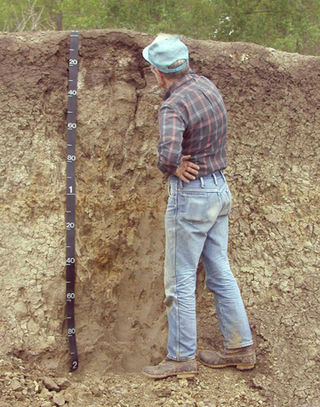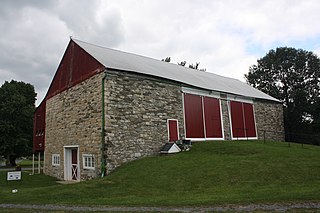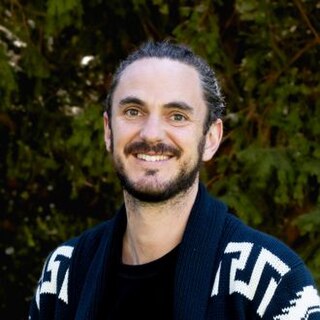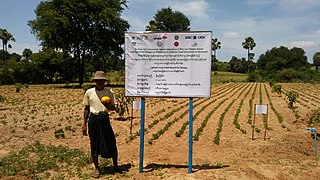Related Research Articles

Soil science is the study of soil as a natural resource on the surface of the Earth including soil formation, classification and mapping; physical, chemical, biological, and fertility properties of soils; and these properties in relation to the use and management of soils.

The World Food Prize is an international award recognizing the achievements of individuals who have advanced human development by improving the quality, quantity, or availability of food in the world. Conceived by Nobel Peace Prize laureate Norman Borlaug and established in 1986 through the support of General Foods, the prize is envisioned and promoted as the Nobel or the highest honors in the field of food and agriculture. It is now administered by the World Food Prize Foundation with support from numerous sponsors. Since 1987, the prize has been awarded annually to recognize contributions in any field involved in the world food supply, such as animal science, aquaculture, soil science, water conservation, nutrition, health, plant science, seed science, plant pathology, crop protection, food technology, food safety, policy, research, infrastructure, emergency relief, and poverty alleviation and hunger.
The International Union of Soil Sciences (IUSS), founded in 1924 under the name International Society of Soil Science, is a scientific union and member of the International Science Council (ISC).

The Soil Science Society of America (SSSA), is the largest soil-specific society in the United States. It was formed in 1936 from the merger of the Soils Section of the American Society of Agronomy and the American Soil Survey Association. The Soils Section of ASA became the official Americas section of the International Union of Soil Sciences in 1934, a notable role which SSSA continues to fulfill.

Livestock's Long Shadow: Environmental Issues and Options is a United Nations report, released by the Food and Agriculture Organization (FAO) of the United Nations on 29 November 2006, that "aims to assess the full impact of the livestock sector on environmental problems, along with potential technical and policy approaches to mitigation". It stated that livestock accounts for 18% of anthropogenic greenhouse gas emissions, a figure which FAO changed to 14.5% in its 2013 study Tackling climate change through livestock.

Rodale Institute is a non-profit organization that supports research into organic farming. It was founded in Emmaus, Pennsylvania in 1947 by J. I. Rodale, an organic living entrepreneur. After J.I. Rodale died in 1971, his son Robert Rodale purchased 333 acres and moved the farm to Kutztown, Pennsylvania.
Soil management is the application of operations, practices, and treatments to protect soil and enhance its performance. It includes soil conservation, soil amendment, and optimal soil health. In agriculture, some amount of soil management is needed both in nonorganic and organic types to prevent agricultural land from becoming poorly productive over decades. Organic farming in particular emphasizes optimal soil management, because it uses soil health as the exclusive or nearly exclusive source of its fertilization and pest control.
Soil governance refers to the policies, strategies, and the processes of decision-making employed by nation states and local governments regarding the use of soil. Globally, governance of the soil has been limited to an agricultural perspective due to increased food insecurity from the most populated regions on earth. The Global Soil Partnership, GSP, was initiated by the Food and Agriculture Organization (FAO) and its members with the hope to improve governance of the limited soil resources of the planet in order to guarantee healthy and productive soils for a food-secure world, as well as support other essential ecosystem services.

The Borlaug Award is an award recognition conferred by Coromandel International for outstanding Indian scientists for their research and contributions in the field of agriculture and environment. The award was created in 1972 and named in honour of Nobel Laureate Norman E. Borlaug. It carries a cash prize of ₹5,00,000, a gold medal, and a citation.
The International Year of Soils, 2015 was declared by the Sixty-eighth session of the United Nations General Assembly on December 20, 2013, after recognizing December 5 as World Soil Day.

Regenerative agriculture is a conservation and rehabilitation approach to food and farming systems. It focuses on topsoil regeneration, increasing biodiversity, improving the water cycle, enhancing ecosystem services, supporting biosequestration, increasing resilience to climate change, and strengthening the health and vitality of farm soil.

Carbon farming is a set of agricultural methods that aim to store carbon in the soil, crop roots, wood and leaves. The technical term for this is carbon sequestration. The overall goal of carbon farming is to create a net loss of carbon from the atmosphere. This is done by increasing the rate at which carbon is sequestered into soil and plant material. One option is to increase the soil's organic matter content. This can also aid plant growth, improve soil water retention capacity and reduce fertilizer use. Sustainable forest management is another tool that is used in carbon farming. Carbon farming is one component of climate-smart agriculture. It is also one of the methods for carbon dioxide removal (CDR).

Konstantin Dmitrievich Glinka (1867–1927) was a Russian soil scientist. He was Director of the Agricultural College of Leningrad and Experimental Station, and the first director of the Dokuchaev Soil Science Institute. He authored over 150 works on soil, geography, mineralogy, and geology. He is known for having published the first world soil map in 1906.

Thomas Ward Crowther is a professor of ecology at ETH Zürich and co-chair of the advisory board for the United Nations Decade on Ecosystem Restoration. At ETH Zürich, he started Crowther Lab, an interdisciplinary group of scientists exploring the role of biodiversity in regulating the Earth's climate. Crowther is the founder of Restor, an online platform that supports thousands of community-led restoration projects around the world. In 2021, the World Economic Forum named Crowther a Young Global Leader.
Elisabeth Holland is an American climate scientist who focuses on how the carbon and nitrogen cycles interact with earth systems. She has become a key player in the international climate debate. She is currently a professor of climate change at the University of the South Pacific. She is also the director of the Pacific Center for Environmental and Sustainable Development.

Climate-smart agriculture (CSA) is a set of farming methods that has three main objectives with regards to climate change. Firstly, they use adaptation methods to respond to the effects of climate change on agriculture. Secondly, they aim to increase agricultural productivity and to ensure food security for a growing world population. Thirdly, they try to reduce greenhouse gas emissions from agriculture as much as possible. Climate-smart agriculture works as an integrated approach to managing land. This approach helps farmers to adapt their agricultural methods to the effects of climate change.

P. K. Ramachandran Nair is an Indian American agricultural scientist, Distinguished Professor of Agroforestry and International Forestry at the School of Forest Resources and Conservation, University of Florida. He is known for his pioneering contributions to the science of agroforestry, for which he received global recognition including the Humboldt Prize (2006). The specific areas of his research include: agroforestry in the tropics and subtropics, integrated farming systems, soil carbon sequestration and climate change mitigation, ecosystem services, and soil fertility management. He has written over 200 peer-reviewed articles, 17 books and over 75 book chapters.
The Glinka World Soil Prize is an annual prize awarded since 2016 to researchers for their direct contributions to the preservation of the environment, food security and poverty alleviation. The winner receives a USD 15000 check and a Glinka gold-plated medal.

Donald L. Sparks is an American soil scientist, currently Unidel S. Hallock duPont Chair of Soil and Environmental Chemistry, Francis Alison Professor, Director, Delaware Environmental Institute, University of Delaware, and Hagler Fellow in the Hagler Institute for Advanced Study at Texas A&M University.

Cheryl Palm was an American agricultural scientist who was Professor of Agricultural and Biological Engineering at the University of Florida. Her research considers tropical land use and ecosystem function, including carbon and nutrient dynamics. She was the former Chair of the International Nitrogen Initiative and a Fellow of the American Association for the Advancement of Science and American Society of Agronomists.
References
- ↑ "Professor Rattan Lal honoured with Glinka World Soil Prize 2018". Food and Agriculture Organization of the United Nations. Retrieved 12 December 2019.
- 1 2 The White House (2022-01-14). "President Biden Announces Key Appointments to Boards and Commissions". The White House. Retrieved 2023-12-03.
- 1 2 3 4 5 6 7 8 Edwards, Randy. "Ohio State Professor Rattan Lal Aims to Eliminate Hunger While Helping the Environment". Columbus Monthly. Retrieved 2023-12-01.
- ↑ "Prof. Rattan Lal". National Academy of Agricultural Sciences (India). Retrieved 12 December 2019.
- 1 2 "Rattan Lal: Our Soils Rock Star". cfaes.osu.edu. Retrieved 2023-12-03.
- 1 2 "Rattan Lal". Ohio State University.
- 1 2 3 4 Charles, Dan (August 11, 2020). "A Prophet Of Soil Gets His Moment Of Fame". NPR Goats and Soda. Retrieved October 5, 2020.
- ↑ "Lal Carbon Center". Lal Carbon Center. 2024-02-06. Retrieved 2024-02-06.
- 1 2 "Carbon markets: Potential income for farmers". Ohio Farm Bureau. 2020-11-12. Retrieved 2023-12-03.
- ↑ Whaley, Sherrie (August 22, 2022). "Ohio State leading new $15 million project to study carbon farming as climate change solution". The Ohio State University.
- ↑ "The Ohio State University Study Examines Soil Organic Carbon-Enhancing Practices". Foundation for Food & Agriculture Research (FFAR). 2024-02-06. Retrieved 2024-02-06.
- 1 2 "Google Scholar: Rattan Lal". Google Scholar. 2024-02-06. Retrieved 2024-02-06.
- ↑ "IUSS - The International Union of Soil Sciences Past officers". IUSS - The International Union of Soil Sciences. Retrieved 2019-12-17.
- ↑ SKNISEditor (November 25, 2021). "Brazil launches the Living Soils of the Americas program, the restoration initiative promoted by IICA and renowned scientist Rattan Lal". St. Kitts Novis Information Service.
- ↑ NEWS (January 24, 2022). "Rattan Lal Appointed to BIFAD by President Biden". Ohio State University.
- ↑ "Rattan Lal: H-Index & Awards" . Retrieved 2024-02-06.
- ↑ Ioannidis, John P. A.; Baas, Jeroen; Klavans, Richard; Boyack, Kevin W. (2019). "A standardized citation metrics author database annotated for scientific field". PLOS Biology. 17 (8): e3000384. doi: 10.1371/journal.pbio.3000384 .
- ↑ Baas, Jeroen; Boyack, Kevin; Ioannidis, John P. A. (2020). "Bibliometrics". Data for "Updated science-wide author databases of standardized citation indicators". Vol. 2. Elsevier Data Repository. doi:10.17632/btchxktzyw.2 . Retrieved 2024-02-06.
- ↑ Jeroen Baas; Boyack, Kevin; Ioannidis, John P. A. (2021). "August 2021 data-update for "Updated science-wide author databases of standardized citation indicators"". Elsevier BV. doi:10.17632/btchxktzyw.3 . Retrieved 2024-02-06.
- ↑ "Highly Cited Researchers". Clarivate.com. Retrieved 2024-02-06.
- ↑ "THE WORLD'S MOST INFLUENTIAL SCIENTIFIC MINDS 2015" (PDF). Archived from the original (PDF) on 2023-06-01. Retrieved 2024-01-11.
- ↑ Pitt, David (11 June 2020). "Ohio State University soil professor gets World Food Prize". Tulsa World. Archived from the original on 13 June 2020. Retrieved 13 June 2020.
- ↑ Bhavani, Divya Kala (2021-02-09). "Meet Prof Rattan Lal, the godfather of Soil Science, and a Padma Shri 2021 awardee". The Hindu.
- ↑ DeMartini, Alayna (October 5, 2020). "Ohio State soil scientist honored for increasing global food production". Ohio State University.
- ↑ "Glinka 2018". FAO, United Nations. Retrieved 17 December 2019.
- ↑ "IUSS - The International Union of Soil Sciences - Von Liebig award 2006". IUSS - The International Union of Soil Sciences. Retrieved December 17, 2019.